Advertisement

Can I let you in on a little secret? Having a “green thumb” is a myth.
Everyone has the ability to care for — and forever love — a houseplant. Or a few …
And you really should. Not only are houseplants aesthetically pleasing (and currently trending), they also offer emotional, spiritual, and physical benefits. Simply caring for them has been shown to boost happiness levels, productivity, and creativity as well as decrease stress. Greenery also filters indoor air toxins and converts carbon dioxide to oxygen.
Read on for some of The Sill's tips on how to choose and maintain a houseplant that's right for you and your space.
And remember: The most important part of any gardening journey to just enjoy caring for your plant — that's what will help it thrive.
Plants for low light
The four plants below do not just tolerate low, indirect light — they thrive in it. Both the snake plant and ZZ plant are tall, structural showstoppers, while the philodendron and pothos are trailing plants with heart-shaped leaves that come in a variety of green hues.
ZZ Plant
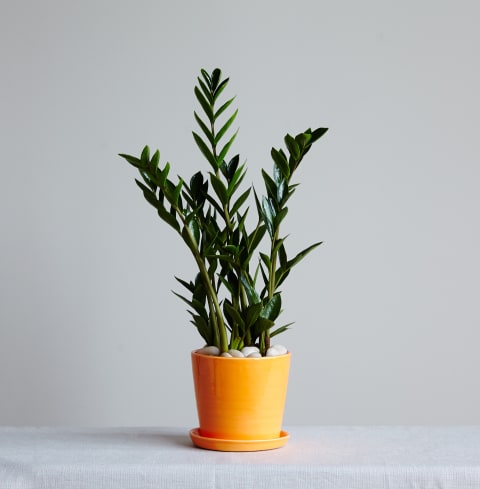
Philodendron
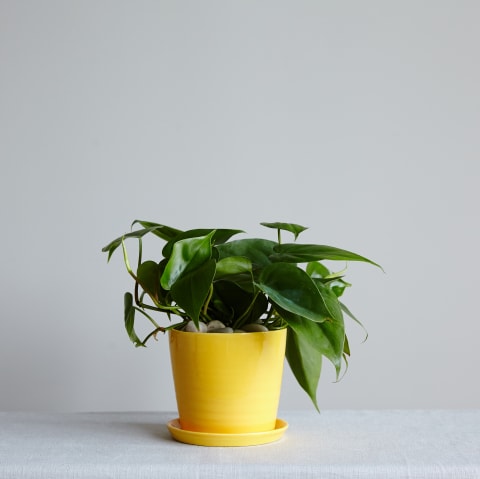
Pothos
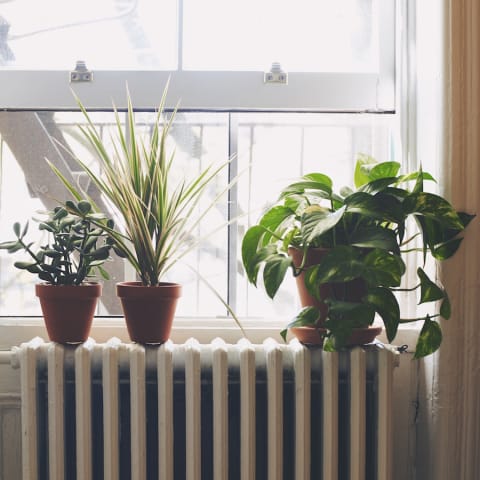
Sansevieria
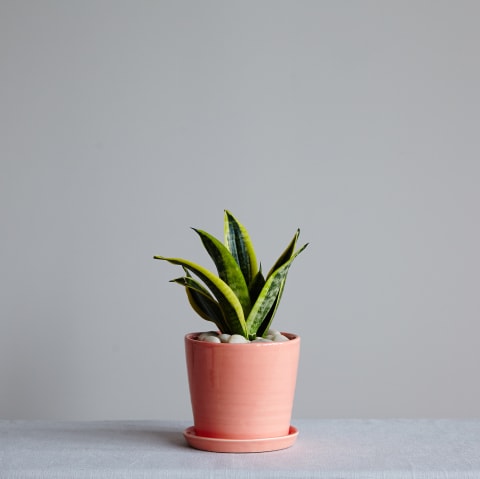
A Sansevieria, or snake plant, is particularly special in that is can tolerate low light levels, droughts, and serious neglect. Not to mention, it’s one of 10 plants given NASA’s seal of approval for removing harmful toxins from indoor air and it converts carbon dioxide into oxygen during the night. (Most plants only do this during the day.)
Plants for bright light
Succulents and cacti thrive in bright, indirect lighting though they can prosper in direct light, too. That sunny, south-facing sill is in luck! Fill it with one of these fun varieties.
Succulents (ex. Echeveria, Haworthia, Burro's Tail)
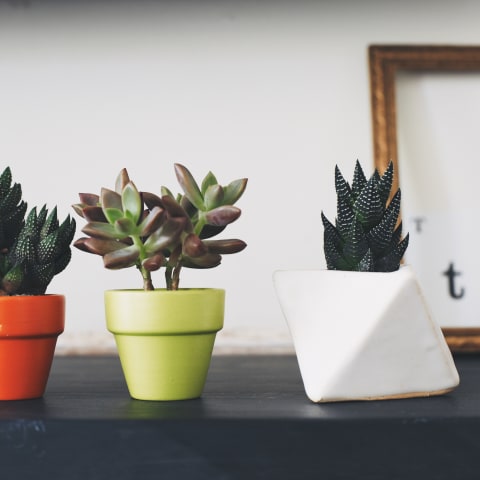
Cacti
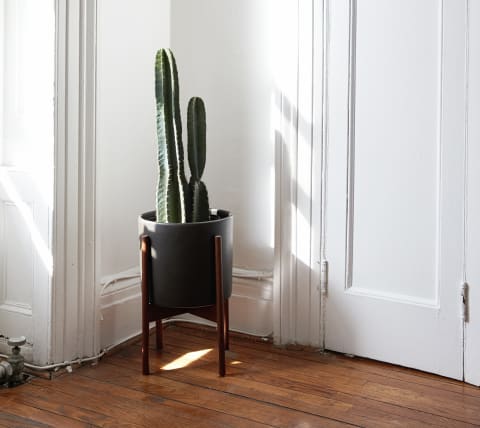
Fiddle Leaf Fig
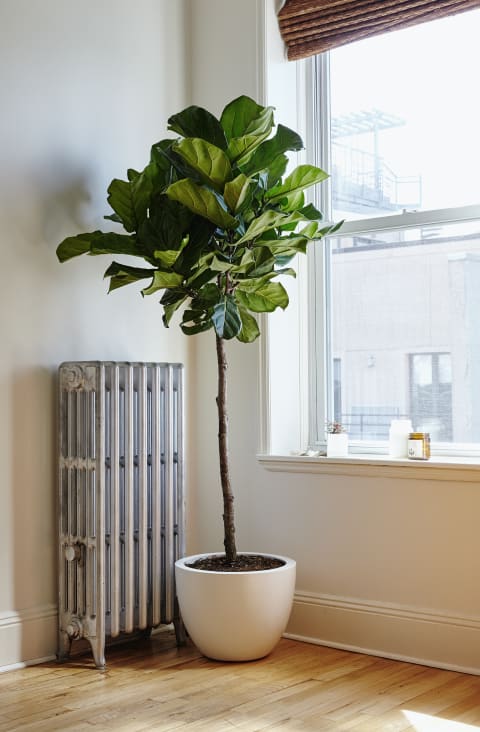
Monstera Deliciosa
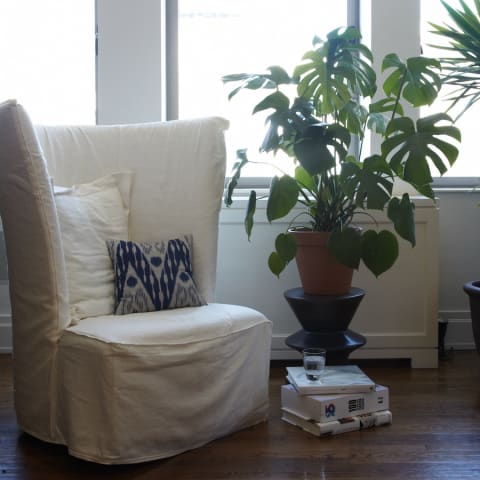
Now that you've found your plant, here are five tried-and-true tips to keep in mind when tending to it.
1. Be picky.
Plants, like people, have different temperaments. Picking the right plant mate for your lifestyle is key. If you tend to be forgetful when life gets busy, try the no-fuss ZZ plant. If you’re a frequent out-of-towner, try a succulent plant, which stores water in its leaves. Or if your pooch can’t keep his teeth off your smelly sneakers — much less a bright green friend — be sure to choose a nontoxic variety like the Ripple Peperomia.
2. Put in the work.
Keeping a houseplant is a relationship. Granted, it doesn’t have to be a high-maintenance one. But expect that in the early days, you’ll need to get to know one another. He may have to get used to your neglect during a hectic workweek, and you’ll need to get a feel for his level of thirst. After a couple weeks of putting in the work, living together harmoniously will become second nature. Nurture the relationship and you’ll be together for a long time.
3. Don’t be stingy with sunlight.
Plants get their nourishment and energy from the sun, so be sure you’re providing the right amount of sunlight. If you’re lucky, you have south-facing windows. These provide the most light and allow you to situate your plants farther into the room. If your window is east- or west-facing, place plants closer to the window. And if your window faces north, which provides for little direct light, your plant will be happiest right on the sill.
4. Water in moderation.
Beware: Overwatering is the easiest way to kill a plant. Most plants should be watered when the first inch of soil has dried out. No need to overthink it — just stick your finger in the potting mix and go with your gut. Always, always use a planter with drainage. Pour water into the planter until the water begins to trickle through the bottom drainage holes and into the saucer. Let the plant soak up the water for 15 to 30 minutes, then empty any remaining water from the saucer. Idle water can attract pests and lead to rot root.
5. Foliage should be fun.
The most important thing is to have fun with plants in your environment. Leaves have great textures, colors, and patterns. Use plants as a way to brighten a drab room, as a centerpiece for your next dinner party, or as living art. And don’t settle for the plastic tub that came with your plant. Be creative and let containers and plant combinations be a reflection of your style.
Whether you’re looking to take on something new, give your space a refresh, or reap the added benefits of houseplants, maintaining plants indoors is stress-free with the right know-how. So go find your perfect plant friend, and look forward to a long-lasting relationship.
Good luck!
Related reads:
- The Low-Maintenance Houseplants That Fight Indoor Air Pollution
- Look At These Tiny (And Adorable!) Gardens That Fit In Any Apartment
- 5 Clever Ways To Turn Old Containers Into An Indoor Garden
Watch Next
Enjoy some of our favorite clips from classes
Enjoy some of our favorite clips from classes
What Is Meditation?
Mindfulness/Spirituality | Light Watkins
Box Breathing
Mindfulness/Spirituality | Gwen Dittmar
What Breathwork Can Address
Mindfulness/Spirituality | Gwen Dittmar
The 8 Limbs of Yoga - What is Asana?
Yoga | Caley Alyssa
Two Standing Postures to Open Up Tight Hips
Yoga | Caley Alyssa
How Plants Can Optimize Athletic Performance
Nutrition | Rich Roll
What to Eat Before a Workout
Nutrition | Rich Roll
How Ayurveda Helps Us Navigate Modern Life
Nutrition | Sahara Rose
Messages About Love & Relationships
Love & Relationships | Esther Perel
Love Languages
Love & Relationships | Esther Perel

















